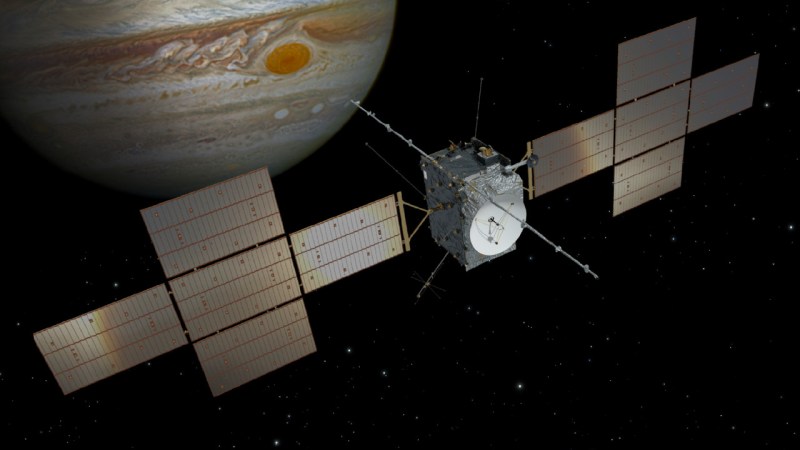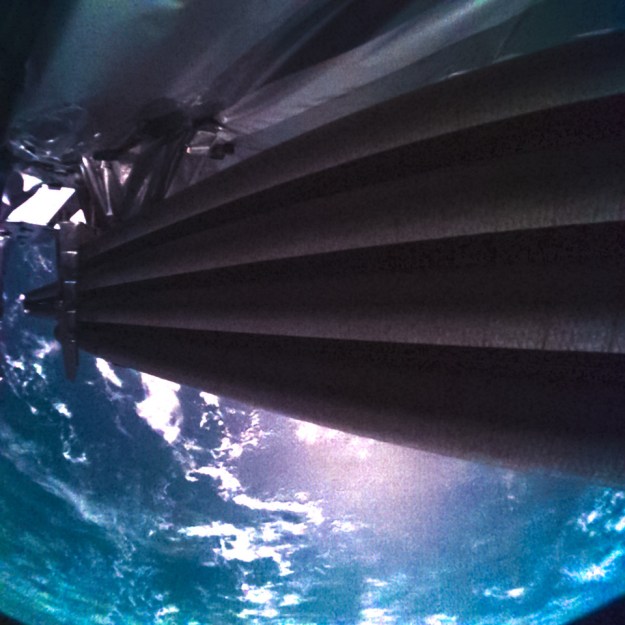ESA’s Jupiter-bound Probe Hits Antenna Snag

While the few minutes it takes for a spacecraft’s booster rocket to claw its way out of Earth’s gravity well might be the most obviously hazardous period of the mission, an incredible number of things still need to go right before anyone on the ground can truly relax. Space is about as unforgiving an environment as you can imagine, and once your carefully designed vehicle is on its way out to the black, there’s not a whole lot you can do to help it along if things don’t go according to plan.
That’s precisely where the European Space Agency (ESA) currently finds themselves with their Jupiter Icy Moons Explorer (Juice) spacecraft. The April 14th launch from the Guiana Space Centre went off without a hitch, but when the probe’s 16 meter (52 foot) radar antenna was commanded to unfurl, something got jammed up. Judging by the images taken from onboard cameras, the antenna has only extended to roughly 1/3rd its total length.

The going theory is that one of the release pins has gotten stuck somewhere, preventing the antenna from moving any further. If that’s the case, it could mean jiggling the pin a few millimeters would get them back in the game. Unfortunately, there’s no gremlins with little hammers stowed away in the craft, so engineers on the ground will have to get a little more creative.
It’s hoped that engine burns could be used to shake the craft, and potentially knock the pin out. They’re also looking at rotating the vehicle to move the antenna mount in and out of the sunlight — the idea being that some expansion and contraction of the metal components could also free things up.
Even in the absolute worse case, the Radar for Icy Moons Exploration (RIME) antenna is just one of ten instruments Juice will use to study Ganymede, Callisto, and Europa. So while it would be disappointing if they can’t get it online, the mission would still provide a wealth of information about these fascinating worlds.
Then again, Juice isn’t scheduled to reach Jupiter until at least July of 2031, so there’s still plenty of time to try and figure something out. After all, it wouldn’t be the first deep-space probe saved by a clever hack.
Post a Comment